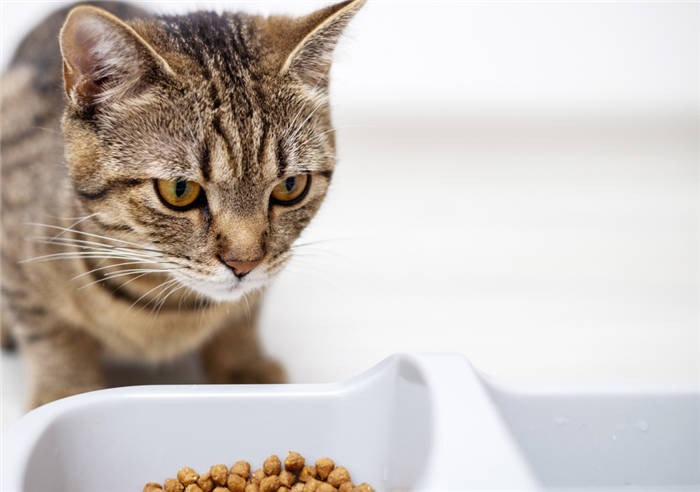Do not sound the alarm if the cat does not want to eat dry food. First observe her behavior. In some cases its appetite will return to normal without the owner's intervention. In other situations, the pet may need the help of the owner or veterinarian to solve the problem. Let's take a closer look at the causes of dry food refusal.
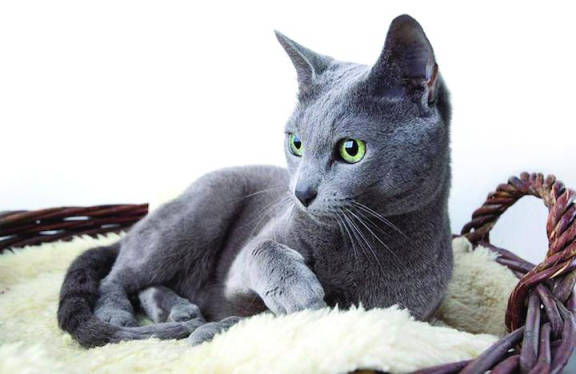
- Why do cats stop eating dry food?
- Reasons
- Eating Disorder
- Physiological reasons for avoiding dry food
- When a healthy cat refuses dry food
- What to do?
- The situation will normalize itself
- Smooth transition to a new diet
- Rules for transition to a new food
- And why is the cat not eating the new food?
- What else can you do?
- The cat stopped eating dry food because he was sick
- Solution:
- Why has the cat stopped eating dry food – possible causes and owner actions
- Actions of the owner
- Food goes bad
- The food is not good for the pet
- What an owner should do
- Determine the cause of food aversion
- Rules for switching to a new diet
- Changing the product frequently is not healthy!
- Transitioning from a homemade diet
- Switching from wet food
Why do cats stop eating dry food?
A cat that has lost its appetite will begin to show unusual signs, such as weight loss and lack of activity. There are times when a cat refuses dry food and prefers only wet food.
When the cat does not eat dry food, it prefers wet food, which seems fresh. Another reason is thirst, so you need to check for water problems. Provide her with clean drinking water and try mixing a dry bite with her favorite wet food to stimulate her appetite.
Cats are picky pets. Unlike dogs, cats are very difficult to please with food. Any slight change in cats' attitudes can change their eating habits and even cause them to refuse certain foods.
Reasons
The reason your cat won't eat dry food can be anything from poor appetite to what's wrong with the feeder, the water, a change in environment or even her pickiness. I'll explain more below.
While it's easy to think that your cat is getting too picky, you can't rule out the possibility that she's gotten sick and, as a result, has lost her appetite.
Illnesses such as cancer, kidney and liver problems, and especially gastrointestinal health issues can seriously alter your cat's eating habits.
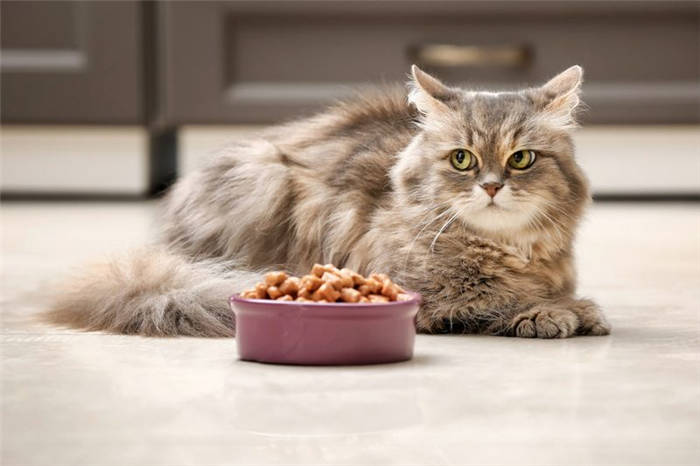
If you can't think of any other reason why the cat isn't eating the dry food on this list, it's time to take her to the vet to rule out disease. Some of the conditions I mentioned above may be serious and should be treated or monitored as soon as possible to prevent the cat's health from further deteriorating to a level that cannot be corrected.
The problem with your cat may not be the food at all. It could be something else, usually thirst. Dry food is not good for the mouth, especially when we all know that cats are necessarily carnivorous animals, always preferring fresh meat, which itself provides moisture.
Dry, dusty and crunchy cat food can cause a cat to feel dehydrated (in the mouth), which is a very unpleasant sensation. Over time, cats will develop a habit of not liking dry, pebble-like or crunchy foods, regardless of quality.
To make sure your cat wants to eat dry food again, make sure you always have a fountain of clean, fresh water.
Cats in the wild like a lot of variety. Restricting your cat to one type of food, especially dry food, can be a problem he doesn't like. Cats that refuse dry food may prefer a variety of foods. This is usually true when it happens all of a sudden. What I mean by that is that when a cat has been eating the same dry food and then suddenly refuses it, it's time for a change.
Eating Disorder
The reason why a cat doesn't eat dry food can be due to constant feeding of other foods. Many owners like to treat their favorites with wet diets, thinking they are just a treat or a treat. At the same time, it is a food that contains enough calories to overpower the appetite.
Usually pampered cats in this way begin to demand tasty things, ignoring the dry food in the bowl, and are so persistent that the owners again and again give their pet a snack, and then worry about the rejection of dry food.
Another fairly common situation is non-compliance with the feeding ration. Dry food is poured on the eye, "with a hill", and since cats have a habit of approaching the bowl 10-15 times a day and eat a little, the owners, not noticing it and contemplating constantly full bowl, conclude that their pet is not eating.
All you have to do is to calculate the daily amount, weighing it to the gram, and you'll find that the cat is doing just fine. It's best to put half a serving in the morning and half in the evening, then it's even easier to see how much your cat has eaten.
Physiological reasons for avoiding dry food
Older animals, and sometimes young ones too, may refuse dry food because of oral problems. They experience pain when chewing the pellets and stay away from the bowl to avoid it, but they are hungry and ask for food. You can examine your cat's mouth and if you notice red gums (normal gums are pale pink), wobbly teeth with signs of decay, contact your veterinarian.
Cats may not eat dry food if it has gone bad. Humans can't smell rancid fat, but cats can, and instinctively they know better than to eat something that might cause poisoning. Store dry food in a cool, dark place, in an airtight container or in a tightly wrapped bag, and never use food that is past its expiration date.
Short-term rejection of dry food and, very importantly, of any food at all, can also happen for other reasons related to external factors. For example, in very hot weather many animals lose their appetite, it may also decrease for a few days during heat, and during severe stress it almost always disappears. In the latter case, the period of refusal to eat may last for several days. Stress in cats is caused by any change in the environment – moving to another place, the arrival of a new family member or pet, repairs in the apartment, etc.
Although the loss of appetite during stress is a natural phenomenon, it does not mean that you should not pay attention to it, because long-term stress is detrimental to the cat's health. So try to give your cat a feeling of security, cats are more accustomed to changes, if you temporarily limit their living space to one room where they will not have access to "strangers" and where the pet in a quiet environment will gradually become convinced that there is no danger.
When a healthy cat refuses dry food
If dry food is constantly available to the cat, and despite that its consumption has decreased over the course of the day and differs significantly from the norm, the problems may be caused by quite a wide range of reasons. Factors that negatively affect a cat's appetite include:
- stressful conditions,
- periods of heat,
- heat,
- Lack of access to fresh drinking water,
- insufficiently clean feeding utensils,
- sudden change in the manufacturer or type of feed,
- change in the palatability of the feed due to expiration date or storage conditions.
Each of the above factors alone, and in combination with others, can give the owner an answer as to why the cat refuses dry food. Knowing the reasons is half the solution to the problem. So let's move on to action.
What to do?
Stressful states in cats can be caused by, for example, trips in transport, a change of habitual residence, the appearance of a new family member or another pet. To help them deal with it, owners need to show consideration and care, and they should follow the principle of gradually accustoming them to the new situation.
Contact with the new family member should be limited at first to give the pet time to become accustomed to its scent. The new territory should also be limited at first to, for example, one room, gradually expanding the area to be explored.
If the stress persists for a long time, you can resort to the use of cat sedatives. In this case, it is better to consult a veterinarian.
The situation will normalize itself
A sudden loss of appetite during heat is quite normal. The main thing is that the cat was drinking plenty of water and in general was quite active. When hormones return to normal, her appetite will surely normalize as well.
During hot summer weather, as well as high temperatures in the house during the heating season, cats may also experience a temporary loss of appetite. During this period they tend to be inactive, expending less energy and therefore not needing the usual amounts of food needed to replenish it.
Most likely, with the onset of night time and lower ambient temperature, your pet will still want some food, so don't remove the food – let it be available around the clock, and don't forget to change the drinking water more often.
Cats are very clean animals, so dirty dishes can also be a reason for not eating. Don't be surprised if your cat will bury freshly dispensed dry food if the bowl hasn't been washed in a while.
Smooth transition to a new diet
If the cat was previously on a natural diet it is quite natural that dry food will be ignored at first. The same pattern may be observed in the case of a sudden change from one food to another. Switching to a new food should be done gradually.
Rules for transition to a new food
Kittens are easier to accustom to dry food, because they have not yet formed the habits of certain foods. When kittens have teething, you can introduce them to dry food, gradually adding solid kibble to their diet.
It is important to use products recommended specifically for feeding young pets, such as Purina ONE® dry food for kittens, with chicken and whole grains. The food has a carefully selected composition and is suitable for cats from 1 month to 1 year of age.
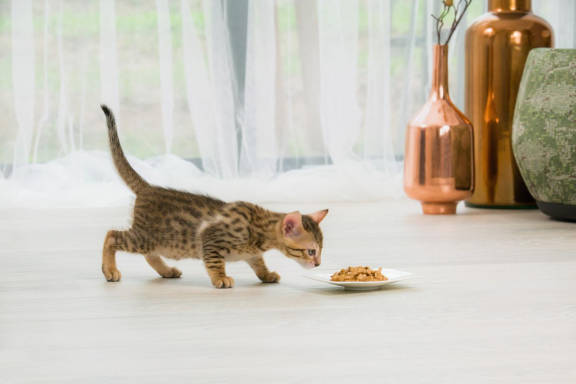
What is important to remember when transitioning an adult cat to a new diet:
- Introduce the food gradually (over 3-7 days): don't change it abruptly, mix it in a little with the old food.
- Stick to a single brand, as frequent changes from one brand of food may lead to digestive problems.
- If switching from natural or wet food, consult your vet: consider the vet's advice and portion sizes during the transition, and watch his food regimen.
- Follow the feeding instructions on the bag, avoid snacks and treats.
- Make sure your pet has clean drinking water.
- Be patient and friendly. The cat needs time to adjust to the new food.
Problems of refusal of dry pellets due to the peculiarities of cat physiology or improper organization of the feeding process are overcome after eliminating the causes. It is worth worrying when the pet is not feeling well, and loss of appetite is not the only symptom of the disease. In such a case, the cat should be examined at a veterinary clinic.
And why is the cat not eating the new food?
The answer lies in the biological characteristics of cats, mathematics and the ability to draw conclusions. The last two factors, by the way, are about you and me. Just take note of what zoological scientists have long known: cats have about 500 taste buds and about 70 million olfactory receptors! Feel the difference? Smell is much more important to cats than taste perception. They can distinguish every possible and impossible shade of odor. But humans, with their nerve cells, located in the upper part of the nose, detect aromas about 14-15 times less. But we have ten times as many taste buds as cats, and there are three to a hundred receptors on them. In other words, when we have thoughts like "how can she eat this crap" or "why doesn't he even want to try this yummy thing," it's not the same thing at all. A cat cannot participate in tasting sets on an equal footing with us, if she wants to. Many things to her are in fact tasteless or taste the same, and her choice is based on what smells tastier.
Different brands' diets are 100 percent different in smell – and this is the main reason why the cat won't eat the new food. Consequently, your job is to trick the stubborn cat by masking the new smell or making it more interesting. Try the following tips and tricks that may help:
Slip pellets of the new food into the bowl with the old food ahead of time, stirring them thoroughly. The smells will mingle after a while and it will be harder for your cat to find "newcomers".
Mix while the pet is not around! Otherwise, whiskers might immediately suspect a trick.
If there is not much to mix and the new food is the only thing you have, try to make it smell more intense. For example, splash it with water (but don't pour it on) and microwave it a little bit on the lowest setting. This method often helps if the new food smells faint or if the pet was previously eating wet food or natural food. Sometimes the lack of smell confuses kittens, who in principle do not understand that hard balls are food. It is not advisable to sprinkle broth on the dry food – firstly the contents of the bowl will spoil very quickly, and secondly there is a risk that you will have to do it all the time, and this is not desirable.
What else can you do?
In addition to olfactory smart tricks, there are other ways to encourage your pet to eat. The main one, to be honest, requires a strong will and psychological resistance to cat manipulation from the owners, but it works sooner or later. When the cat won't eat the new dry food, deprive it of the alternative.
At first she will say "I'd rather starve than eat a crumb", but after a few days she will be ready to compromise. The main thing is not to give up before time! At the time of transition it makes no sense to offer the freak and a new food, and give her something familiar, "so she was not hungry. So you only delay the process.
Do not think that a voluntary diet will affect the health of the animal. If the cat is not old, emaciated, sick or pregnant, and has already reached puberty – everything will be fine. If she is starving, it means there are internal reserves and possibilities.
An additional way to accustom kittens and young animals to new food is not so radical, and it is based on the hunting instincts of cats. Surely your purrfect cat has ever caught flies in the apartment and then tasted them. This does not mean that she likes the protein and chitinous shells of insects, just "what's in her mouth – fell into her mouth.
For dry food, you can use your instinct to hunt while you're accustoming her to the new food. Just play with it by tossing pellets. Or put some in a small box, ball or similar, rattle them around and get her attention, so she can paw at them vigorously. Your imagination and knowledge of favorite cat toys and activities will help here.
One last tip: Don't stand over your cat's soul and watch him to see if he has already started eating or if he is still thinking. Put the bowl down and go in the other room. Self-loving and willful, cats are unlikely to be happy to witness their "defeat. And if no one sees you, you can feed yourself and pretend that you are "starving". By the way, dry food is quite a nourishing type of food, so even a few pellets eaten without appetite is already good.
The cat stopped eating dry food because he was sick
Most serious illnesses are accompanied by a decrease or complete loss of appetite. So if he's refusing his dry food, look closely to see if he has any other warning signs.
- General malaise: The cat is not interested in games and wants to hide in a secluded place;
- Digestive problems: diarrhea, constipation, vomiting, urge to vomit
- increased body temperature;
- abnormal discharge from the eyes and nose;
- excessive shedding, itching, skin and mucous membranes rash;
- The cat has stopped eating not only dry food, but also any other food.
Solution:
If one or more of the above signs are present, do not hesitate to contact your veterinarian. With some diseases the success of treatment depends largely on whether it is started in time.
Why has the cat stopped eating dry food – possible causes and owner actions
In some cases, an animal that refuses to take food, suffers from disorders of the organs of smell and vision. Food that is unattractive to the cat, especially in the form of dry pellets, should be replaced with more attractive food.
Owners are advised to dilute dry pellets with special pâté or use most wet food. Cats on a natural diet should receive lightly heated food, as its palatability is enhanced.
In addition to pathological reasons for a cat's refusal to eat dry food, there are also physiological factors. These include:
- Consumption of dry food for the first time. A cat's reaction when trying dry food for the first time is considered normal, proceed with caution. The animal is repelled by the consistency and smell of the new food. If the pet has previously eaten other dry food or natural food, the transfer to the new type of food is recommended to be carried out gradually.
- Poor quality food. Dry food is characterized by long shelf life – from 2 to 3 years, but only if properly stored and hermetically sealed. If the package is already open, shelf life rapidly decreases. Most dry food pellets contain oils, which go rancid and oxidize quite quickly when in contact with the air. The food can spoil as early as 3 weeks of use. It is forbidden to give this kind of food to animals. Otherwise, the risks of intoxication of the body are not excluded.
- Pampering. Cats are quite cunning and resourceful. In order to get what they want, they can go to different methods, including capriciousness. A cat that refuses dry food, often receives a treat from a compassionate owner in order to maintain its strength. This then leads to the formation of a persistent habit – not to eat its own food, but to beg for delicacies. It is extremely difficult to wean a pet from such behavior.
- Habituation to various flavor enhancers. Most economy foods are fortified with various flavor enhancers. When trying to switch to a more expensive and higher quality food, the owner may encounter a problem with refusal of food. This is due to different taste preferences. Switching from one type of food to another must be done gradually, not in 1-3 days, but at least 7-10 days.
- Stress conditions. Appetite disturbance and temporary refusal of food occur in cats with severe emotional distress. A stressed animal, unable to take food.
- The sex hunt period. The beginning of the sexual hunt period, especially in males, is marked by the refusal of food, even the most beloved. Feeling physical discomfort under the influence of its instincts, the animal focuses on the sole purpose – reproduction. Trying to change this phenomenon is useless until the sex hunt period is over. Owners of cats and cats not planning to receive offspring from their pets in the future, doctors recommend a planned surgical intervention – castration.
Actions of the owner
The first thing the owner should do is to carefully observe the behavior of the animal. If the cat refuses dry food, but at the same time eats wet food or pate, indicates that the dry food may be spoiled.
It is important to conduct a visual examination of the pet, noting any changes – discharge from the eyes or nose, manifestation of allergies on the skin, inflammation, the beginning of dehydration of the body. it is necessary to examine first of all the condition of the mucous membrane of the mouth, noting any changes in the form of bleeding, swelling and redness.
Prolonged refusal of food for 2 days is indicative of disorders in the body and requires the intervention of a veterinarian. Otherwise, dystrophic processes in organs and tissues are ensured.
Urgent intervention of a qualified veterinarian requires such conditions in the animal as:
Urgent treatment at a veterinarian should be sought if the animal is unable to empty the bowels or bladder on its own, if nausea and vomiting, problems in the musculoskeletal system.
Attentive attention to any changes in your pet's health will allow you to contact specialists in time to save your pet's life.
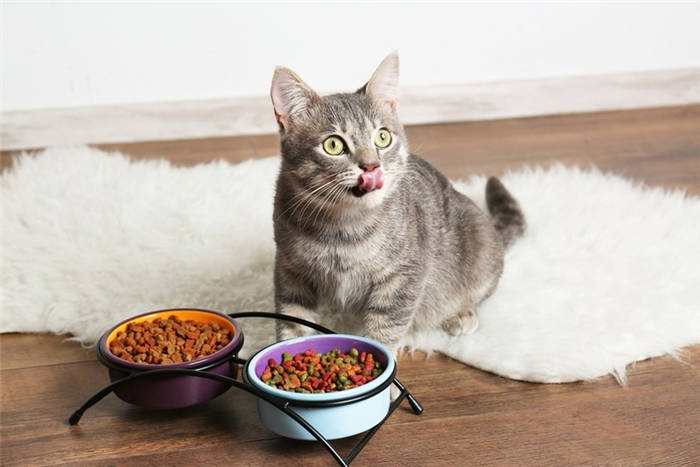
Due to the high volume of questions, free veterinary consultations are temporarily suspended.
Food goes bad
Many owners think their pets are fed up with their food and run to the store to get them something new. We hasten to assure you that nothing of the sort is actually happening. Cats are rather conservative creatures and if they like some food they seldom refuse it, besides, their taste buds are negligibly small compared to humans, so there is no reason for them to be gourmands.
Most likely, something happened to the food itself – either its expiration date expired, or it went bad from improper storage, for example, in a hot or humid place, under direct sunlight, etc. It happens that cats refuse food that has been in the bowl for too long, in which case the smell wears off and the animal, not feeling the familiar flavor, neglects this food. In this case, it may be advisable not to pour the whole daily portion into the bowl at once, but to add fresh portions several times a day.
The food is not good for the pet
Of course, some dry foods are more readily eaten than others, and this is directly related to the composition of the diet. And this is when, indeed, it's better to go to the store and choose another product, but only before that you should be well prepared and study the composition of dry food, so that you do not encounter this problem again.
Cats eat best foods that have a lot of meat ingredients and use animal fat rather than vegetable fat, so these are the criteria that should be paramount. Read more about how to choose cat food in our article.
What an owner should do
The response directly depends on the cause of the poor appetite. Once this is determined, stressors or other inappropriate factors will need to be removed, and feeding alternatives or time will need to be taken to accustom the pet to the new diet.
Determine the cause of food aversion
When alarming symptoms indicating a possible pathology are detected, you should not force your pet to eat against his or her will. Cats have been known to develop persistent food aversion when forcibly fed. If food refusal occurs, simply contact your veterinarian. After treatment, appetite will return on its own.
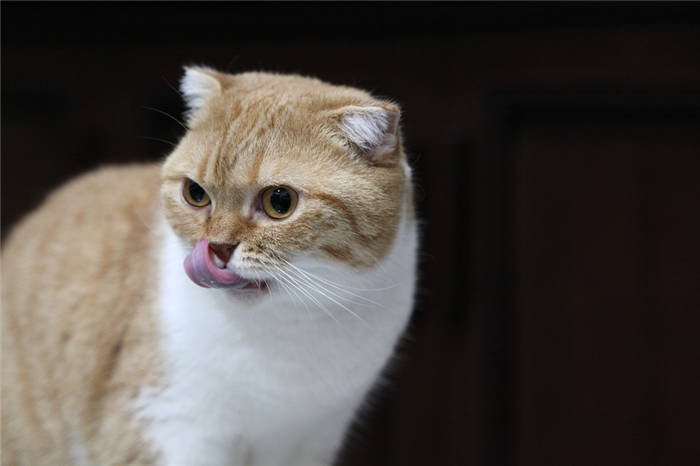
If the cat does not eat dry food badly because of the disease – start with the specific situation:
- Loss of sense of smell. With proper care, the mild disorder will quickly go away on its own. If olfactory function has decreased due to old age, it makes sense to find ready-made diets with increased palatability, formulated especially for older cats, or to prefer wet industrial food, which starts to smell stronger when heated to 30 degrees Celsius.
- Hot weather or sexual hunting. Both situations resolve on their own after some time or when conditions improve. All you need to do is to make sure that he drinks his daily quota of water and eats, even if it is not dry food but wet food for example.
- Increased anxiety. Create a comfortable corner with a shelter where he can be alone, and allow him to climb up on specially made complexes. Give him enough attention to avoid jealousy of his new residents and distract him from other annoyances. Consult a pet psychologist if necessary.
- Regimen failure. Strictly follow the recommended daily allowance on the package. Avoid handouts from the table and don't forget to include wet canned foods and treats in the total daily caloric intake.
- Dental problems. Older pets should choose a special diet with easy-to-break and/or small pellets to avoid discomfort and possible pain.
- Recent change of diet type. Here you need to be patient and just stick to the basics – or extend the transition time from one diet to another. Sooner or later your pet will adapt to the new food.
- Spoiled pellets. Don't buy food by weight if it's not stored properly, and don't take large packages that will keep open for more than 1.5 months. When you have opened the bag, it is not advisable to put it into a jar, but rather put it in an air-tight container with a lid and store in a cool dark place.
- Lack of hygiene or improper material. Rinse bowls regularly with boiling water to remove unpleasant odors and kill bacteria. Remember that micro-cracks in plastic quickly breed pathogens. It is much safer to buy products made of glass or ceramic.
Rules for switching to a new diet
Be patient and consistent when changing your pet's diet. Do not scold your pet or indulge him. A sudden transition is bad for health, so the new food should be added to the old food a little at a time. On average, this takes 1-2 weeks.
Changing the product frequently is not healthy!
Changing brands of dry food frequently is fraught with gastrointestinal problems. To avoid diarrhea and constipation, veterinarians recommend sticking to a particular brand even on a therapeutic diet. This is not too difficult, as most manufacturers produce several lines that take into account the age and other characteristics of the pet.
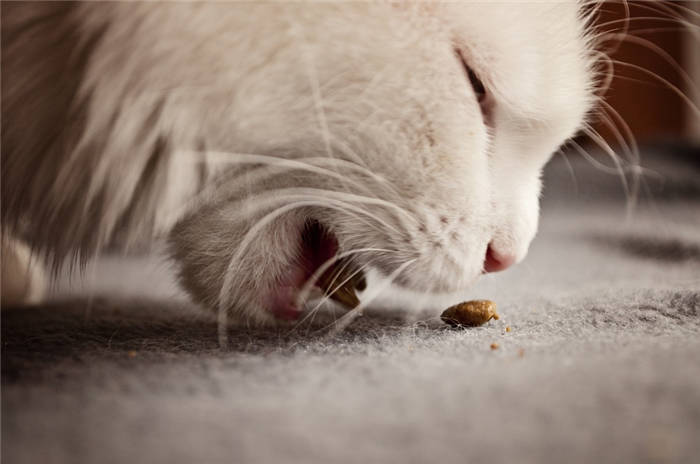
Transitioning from a homemade diet
It is recommended to mix different types of products gradually, so do not be surprised by a temporary disturbance of the stool. In this case, have patience and stick to the following scheme to avoid unwanted reactions as much as possible:
You can make smoother steps in 5% in case the cat refuses to eat or undesirable reactions from the digestive tract are observed. At the end of 2 weeks, dry food should be 100% of the diet. Soak the pellets in water for the first four days so they are not frightened away by their unfamiliar consistency.
Switching from wet food
The principle of transition here is similar to the previous point. The only difference is that the final portion should correspond to the instructions on the food package. There are detailed rules for feeding the 2 types of food.
Note that increasing the amount of dry pellets will require a large amount of liquid to digest them. Make sure your pet drinks enough water and change it regularly with fresh water.
